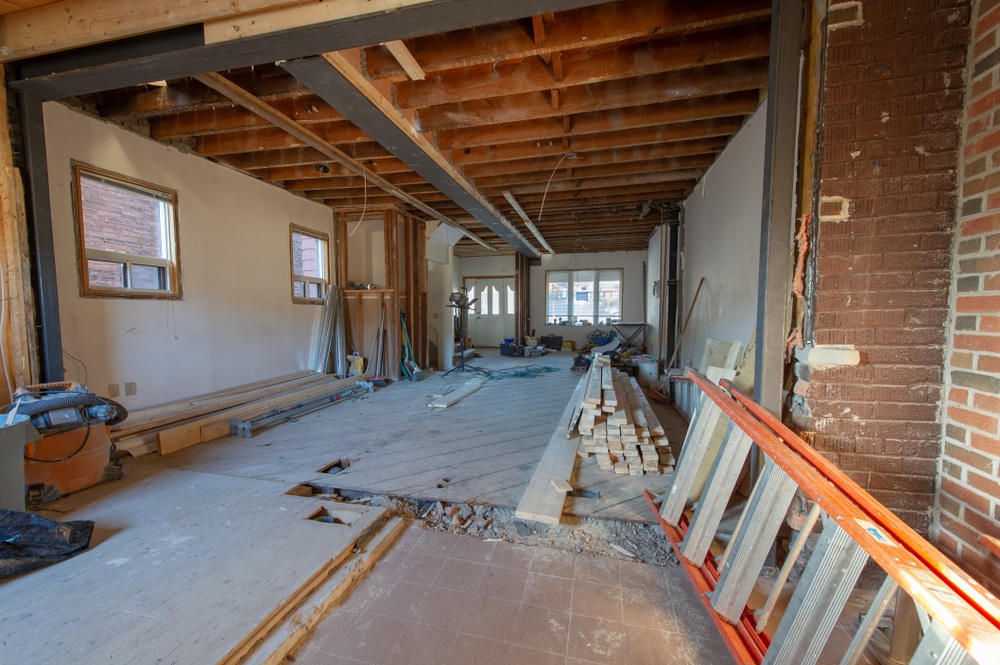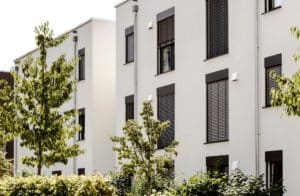When trying to reduce our environmental impact, the decisions we make are crucial. In this blog, we will be exploring the pros and cons of both new builds and re-use to help find the best route for you, your project and the environment.
If you are about to purchase a build, it can be quite confusing to know whether a new build or reuse is better environmentally. It’s a choice many developers and architects need to make and both have their own pros and cons. Financial returns, building risks and environmental responsibilities all come into play and need to be carefully considered.
Developers and architects also have to consider whether a building is obsolete. Obsolete is when a building has reached the end of it’s life and cannot be used further by the public, whether that’s because of safety issues or comfort levels, but we will go into more detail later.
We are going to explore both avenues in this article to help you decide whether new build or re-use is best for you.
Are new builds worse for the environment than refurbishments?
In a nutshell, yes: new builds are typically worse for the environment than refurbishments. It might be surprising, but the amount of greenhouse gasses that are released pollutes more than the refurbishments due to many more virgin materials going into the creation of a new building.
In addition, carbon emission from new buildings has been shown to be higher than the renovation after 30 years, suggesting a focus on renovations rather than new builds will work towards reducing carbon emissions.
In fact, the government is encouraging home owners to refurbish their current homes. The New Green Homes Grant was launched to bridge the gap between delivering net zero homes and supporting green careers and economic recovery. The scheme will provide homeowners and landlords with vouchers to install solid wall, cavity wall, roof insulation, solar thermal and many more.
However, it’s important to remember that there are schemes dedicated to new builds across the UK. The “building better, building beautiful” project was created by the Building Better Building Beautiful Commission to advise the government on how to promote high quality design for new homes and neighborhoods across England. Local communities will be at the heart of the plans to create new developments that are beautiful and well designed with the mission to build back better.
Overall, there are many layers to consider when comparing new builds to refurbishments. New builds are needed because developers are able to start from scratch as you can use as many eco-friendly buildings. In addition, new builds are unlikely to need major repairs and it’s also likely to be energy efficient due to having double glazing and insulation.
What makes a building obsolete?
When refurbishing an old build, it is important to remember that not every development can be improved and issues can pop up along the project. Obsolescence occurs when physical deterioration, wear and tear, technological advances and economic conditions come into play. Of course, the design, appearance and social needs also have a big impact on the building.
Depending on the build, obsolescence will be decided by case by case basis. The focus would be on whether the building is fit for the intended purpose, looking into areas such as possibilities for the developer, structural soundness, material quality and occupant safety/comfort. Once these areas have been checked and confirmed, developers can decide whether the building is obsolescence or able to be refurbished.
What are the key factors that influence a decision to demolish or refurbish a building?
Many key factors influence a decision as to whether to demolish or refurbish a building, such as financial returns, building risks and environmental and social responsibility.
The impact that the construction industry has on the environment is high, with around 40% of the UK’s emissions coming from the built environment whilst construction and demolition activities generate around 60% of the UK’s waste. However, when a building is demolished a new one is put in its place and the construction process creates entirely new emissions, with some energy efficient buildings taking decades to save more emissions than were created.
However, there’s still pros and cons to each avenue and they need to be considered before a decision is made.
Financial returns
Whether we like it or not, financial return forecasts significantly impact the decision process for every developer and designer. Even if the developer plans to live in the house long term and then sell it, it could be seen as financially wiser to tear the house down and rebuild. However, if money is tight, refurbishing could be the way to go.
Building risk
Building risks and structural safety is a key factor when deciding whether to demolish or refurbish a property. Obsolescence is a huge consideration and if the structural safety is not at it’s best, the level of risk in reusing an older building might not always be financially ideal or possible within the time of a project.
Environmental and social responsibility
Across the construction industry, we now have to consider the industries impact on the climate and meet net zero zarbon legislations set by the UK government. One way that developers are working to meet these legislations and laws is by the reuse and refurbishment of buildings due to the reduction of embodied carbon. However, it’s argued that refurbishing a building might not meet the operational emissions and social value targets, even if embodied carbon were reduced compared to new buildings. However, this is not a reason to discount refurbishing a building as the life cycle link between reuse and embodied carbon has to be considered.
How can we make building reuse a more viable option?
Of course, there’s going to be many factors that can influence the decision to refurbish or demolish a building such as market changes, climate, social impact and many more. However, there’s a few things developers can do to make building reuse a more viable option.
- Highlight how reuse/circularity can support net zero carbon ambitions and other legislations.
- Provide higher quality and quantity of information on the materials used within the existing building using a material passport. This will help the industry to understand issues surrounding warranty, safety and compliance.
- Provide their works with training and skills to understand refurbishment and adapt reuse processes in their work.
- Consider reuse from the start and include them in the strategy and ethos.
- Demonstrate in planning why a building and its materials cannot be retained before permitting demolition.
Can Buildpass help me make development more sustainable?
Yes! We offer a range of services that can help you to make your development more sustainable. From PAS 2035 Retrofits to Passivhaus, take a look at our services to see which package is perfect for you and your project. If you are still unsure, schedule a call with a member of the team! We would be happy to help talk you through your needs and find the suitable program for you.




















